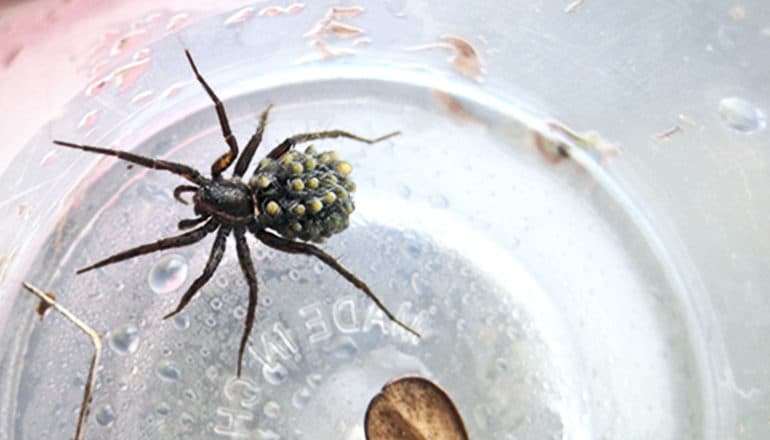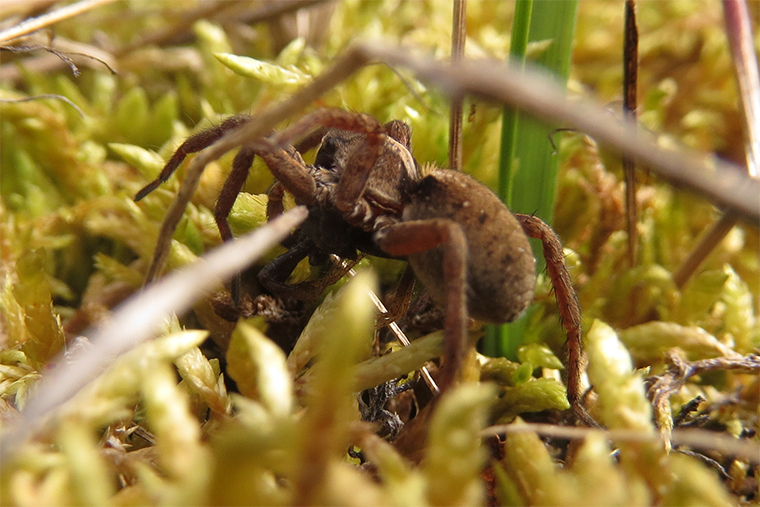
As female wolf spiders in a warming Arctic grow larger and produce more offspring, increased competition triggers more cannibalism, researchers say.
That in turn reduces the number of young spiders that survive to adulthood.
“Although cannibalism is probably not the best dietary choice for these spiders, our field and experimental data suggest that when there are lots of spiders around, they turn to cannibalism more frequently,” says Amanda Koltz, a postdoctoral fellow in biology at Washington University in St. Louis and first author of the study in the Journal of Animal Ecology.
“It’s likely a reflection of increased competition among the spiders for resources.”
This morbid scenario could already be playing out in some parts of the world—and could have consequences for invertebrate populations more broadly.

Animals such as spiders that regulate their body temperature externally are particularly likely to experience changes as a result of warming. In some areas of the Arctic, biologists have found bigger wolf spiders following years with longer summers. This suggests that as climate change continues to warm up the Arctic, wolf spider body sizes will generally become larger.
At the same time, fecundity—or the number of offspring that females produce—tends to increase as females become larger, so bigger spiders might translate to more spiders in the future. But whether this change actually results in more spiders in the wild remains an important question.
“Space and resources on the tundra are finite,” Koltz says.
Wolf spider diets
For the study, Koltz made observations at two sites in the Alaskan Arctic where the body size of the locally dominant species of wolf spider naturally varies.
She paired this comparative field-based study with a mesocosm experiment where she manipulated the number of wolf spiders in an enclosed space to see how exposure to higher spider densities affects wolf spider diets.
Within the field populations, Koltz discovered that the presence of larger female spiders associated with fewer juvenile spiders. This was unexpected, as larger females produce more offspring. Using stable isotope analysis, she then found that the spiders at the site with larger females had different diets than at the site with smaller females.
The dietary shift was consistent with what a shift toward cannibalism would look like, suggesting that in areas with larger spiders—and higher reproductive rates—spiders cannibalized each other more often. Experimental results further supported this finding.
“Wolf spiders that were experimentally exposed to higher densities underwent a dietary shift similar to that of the field population where females were bigger—and where we would expect competition and cannibalism among wolf spiders to be highest,” Koltz says.
Bigger doesn’t always mean more
Studies have previously shown that wolf spiders from lower latitudes cannibalize each other when experimentally exposed to higher densities. Yet the extent to which this behavior affects natural populations of wolf spiders was not clear.
The results of the new study suggest that cannibalism reduces juvenile survival to regulate wolf spider populations in the wild. However, in the long term, frequent cannibalization may not offer an advantage for individuals, or spider populations.
“Cannibalizing on other spiders of the same species reduces competition by reducing the number of other spiders around,” Koltz says. “But evidence from other studies has shown that wolf spiders that are only fed other wolf spiders don’t live as long as those that eat a more varied diet.”
So even though they reproduce more, bigger spiders may not always lead to more spiders on the landscape.
“This project was based in the Arctic, but the main message is not limited to the Arctic or potentially even to wolf spiders,” Koltz says. “The results from our study are a reminder that changes in invertebrate body size driven by climate change could have widespread ecological consequences, including shifts in intraspecific competition, diet, and population structure.”
Source: Washington University in St. Louis
The post Warming Arctic nudges wolf spiders to cannibalism appeared first on Futurity.
from Futurity https://ift.tt/35IiNXY
No comments:
Post a Comment